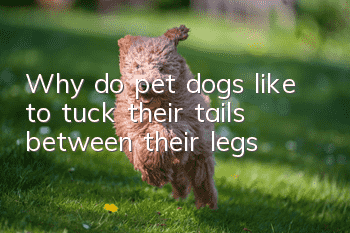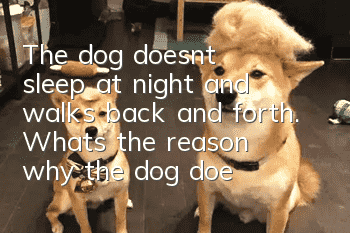Why do pet dogs like to tuck their tails between their legs?

Dog owners have probably seen dogs running away with their tails between their legs, so why do dogs tuck their tails between their legs? As people know, dogs tuck their tails between their legs because of inner fear and fear, or because they are threatened by something. But why do dogs use the body language of tucking their tails to express themselves? What’s the special meaning of it? And a cocked tail is a symbol of pride and high status?
The answer lies not in the dog's tail itself, but in the scent signals emitted near the dog's anus under the tail. When two dogs meet, they will raise their tails high, exposing their anus area for the other party to smell. own smell. Since the anal area emits an odor that is unique to each dog and indicates its identity, pinching the tail to prevent the odor from coming out is like a person not wanting to show his face when he feels inferior.
For dogs living alone in human families, this expression is not important, but as long as a group of dogs live together, the hierarchical relationship is very important, and tail-pinching has become an important signal that the dog is the weak one. A sign of humility before the strong.
There is no doubt that this is also particularly important in wild wolves. When a low-status wolf approaches a higher-status wolf, it will lower its tail. When it approaches the "alpha wolf", it has to clamp its tail tightly between its legs until it is close to the "head wolf". The wolf only dared to raise its tail again when it was very far away.
There is an interesting difference in tail display between domestic dogs and their wild ancestors. There is a special tail gland on all wolf tails, located at the lower end of the tail, surrounded by light and hard hair. This black tail gland is composed of a group of mutated sebaceous glands. It emits smell but does not secrete oil
Like the anal glands, the tail glands are solely concerned with scent signals and are located on the outside of the tail. If a wolf approaches another wolf with its tail between its legs, the scent from its tail glands can still be smelled by the other wolf, but the scent from its anus will be gone. Without this kind of tail gland, it can be seen that the scent signal of wolves is much more complex than that of dogs
Why dogs’ tail glands degenerate is still a mystery. As for the various other changes that have occurred in the process of dogs evolving from wolves over the past 10,000 years, they were all intentionally selected due to human needs. The result is the various so-called purebred dogs we see today. However, the function of the wolf's tail gland has only been discussed recently, so it is unlikely that it came to the attention of those breeding new dog breeds centuries ago. However, it is certain that the tail gland disappeared in dogs very early because all dogs today do not have tail glands. Regarding the raised and lowered tails of dogs and wolves, their primary function is undoubtedly to control scent signals, but as a secondary visual signalThe number cannot be ignored either.
- How to treat urinary tract stones in dogs? Dogs may need surgery!
- What should I do if my dog has no milk? The owner should check quickly and don’t let the puppies starve to death.
- Dog’s anal gland odor, please note that this is a sign of your dog’s health!
- What are the symptoms of dog pain? How to detect dog pain early
- How to make your dog like to eat dog food Four ways to make your dog fall in love with dog food
- Can dogs digest peach pits if they eat them? Can dogs digest peach pits if they accidentally eat them?
- How to protect your dog’s food? Teach you tips on training your dog
- Why do dogs defecate everywhere? How can dogs stop defecating everywhere?
- What should I do if my dog has lupus? Immune system diseases should not be underestimated
- If your dog's hair is cut and the skin is cut, the flesh is exposed. If the dog's hair is accidentally cut and the skin is cut, it must be disinfected immediately.



